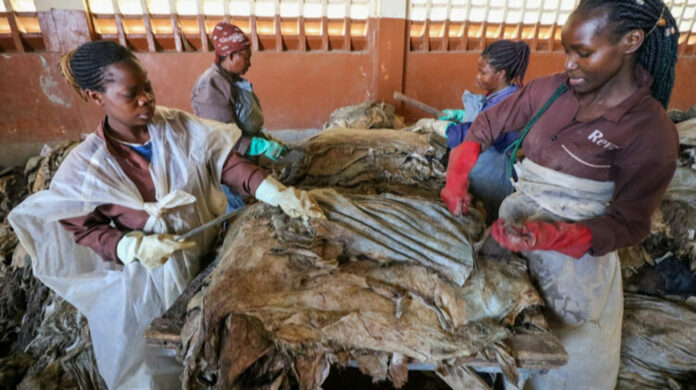The Ministry of Agriculture and Livestock Development has rolled out a collaborative plan with the private sector in a move to double leather production by the end of 2024.
In case the new plan is realized, this will mean the creation of about 100,000 new jobs which also seeks to grow the production of leather-related products such as shoes where the country produces eight million pairs annually.
While leading a tour of the Kitengela Prison Leather Tannery, Principal Secretary in the Ministry of Agriculture, Livestock Development, Jonathan Mueke called for efforts to turn the leather sector into a significant source of jobs.
“As we are reviving the leather sector, we found that there is a huge demand for leather finished goods in Kenya, so we are working with the private sector to increase value addition and create jobs,” said Jonathan Mueke, Principal Secretary in the Ministry of Agriculture and Livestock Development.
Mueke further outlined plans to audit all the machinery to know the total costs needed to make the tanneries operational.
The sector intends to engage in training programs for leather technicians on modern leather making as well as leather technology. The country currently imports leather and footwear goods worth about Sh. 9 billion.
Though Kenya is a net importer of footwear, with the renewed focus from the government, the sector under study hopes to turn this around.
According to the Kenya Leather Development Council, the current number of tanneries is 15, spread across the country.
Caroline Wanjiru: Businesswoman manufacturing world class leather products
The State shall set up more common treatment plants and leather industry clusters in Athi River, Narok, Isiolo, Wajir, Nakuru, Kisumu, Eldoret, and Mariakani.
The leather sub-sector, according to industry data, employs about 17,000 people directly. Out of this number, 7,000 are in the formal, while 10,000 are in the informal sector in tanneries, leather goods, and footwear manufacturing.
According to the latest data from Kenya National Bureau of Statistics Economic Survey 2024, growth in the leather and related products sub-sector stood at 21.7% in 2023 compared to a growth of only 2.4% in 2022.
“The increase in leather and related products was mainly attributed to a 27.5% increase in production of footwear with uppers of leather,” KNBS stated.








